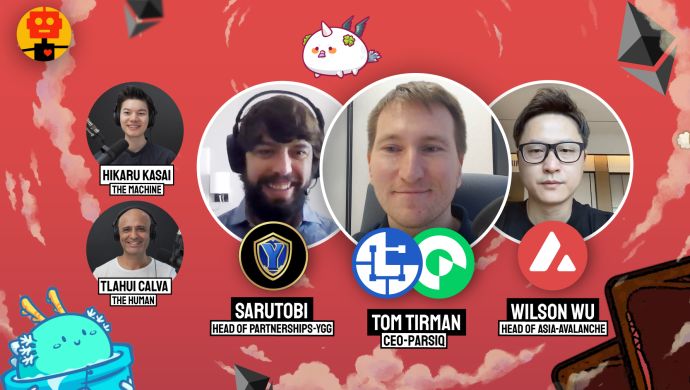
Blockchain technology has come a long way since Satoshi Nakamoto introduced it as a decentralised peer-to-peer financial system. In a nutshell, it presented a solution secured by cryptography for transacting value without relying on any centralised entity.
To date, the technology is rapidly evolving to support various industry verticals, such as payments, cloud computing, smart contracts, and of course, DeFi and NFT. But still, the average consumer is reluctant to fully embrace blockchain because the technology is still in its infancy. Blockchain is adapting to serve more use cases relevant for mainstream people, which requires sufficient learning and time.
Fortunately, the rise of DeFi and NFT is rapidly changing that notion. We are now witnessing a new wave of global blockchain adoption, fueled by powerful incentives. DeFi grew 335 per cent in 2021 alone, to a total value of US$85 billion raising interest from institutions and consumers. The NFT market cap is now more than US$7 billion, recording US$400 million in monthly sales.
The DeFi and NFT sectors continue to surge in total locked value as well as user activity. Together, they are creating novel opportunities for more people to embrace blockchain through the play-to-earn ecosystem.
Play-to-earn: a natural fusion of NFT and DeFi
Play-to-earn games are becoming more popular than ever, attracting mainstream users who have no prior knowledge about blockchain. Players are earning income by having fun while learning about the core tenets of DeFi and NFT under the hood. Through play-to-earn games, thousands of players are inclined to try new platforms that encompass the benefits of DeFi and NFT.
Also Read: Blockchain technology for climate action? Here’s why it works
The idea of DeFi’s peer-to-peer lending and borrowing is stemming into the world of NFTs, where gamers can lend their items to generate additional earnings. In a panel discussion with The Human & Machine Podcast, Tom Tirman, Co-founder and CEO of PARSIQ, illustrated how their IQ Protocol technology is creating solutions for anyone to lend NFT assets without collateral.
“A lot of these assets are becoming very expensive, and we are seeing that people in play-to-earn games are not necessarily the people who can afford to buy a five-figure NFT. This inspired us to create solutions where anyone can borrow NFTs with lower cost and no risk, so more gamers can realistically obtain the NFTs required to participate in play-to-earn platforms,” says Tirman.
DeFi’s lending and borrowing model is empowering new ways for players to enrich their play-to-earn experience. It allows asset owners to earn by lending an expirable version of the NFT to others who borrow it for a relatively low fee. This can help players to try new games without shelling out high upfront capital for each and every play-to-earn platform.
How play-to-earn is creating an inclusive ecosystem
The gaming society has various types of users and stakeholders. Investors seek to deploy capital and help game developers to generate profit. Gamers devote their time to playing hours behind the screen, while others have the skills and capabilities for building them. As an important pillar, developers help grow blockchain adoption by building robust underlying structures. These are crucial to enhance the overall performance of play-to-earn platforms.
“We are channeling resources to various smart contract projects through developer fund programmes. This offers the highly demanded support and funding necessary to build high-performance apps that drive mainstream adoption, instead of merely focusing on the overall user experience,” says Wilson Wu, Head of Asia at Avalanche.
Think of it as a community whose members depend on each other to sustain an economy. The gamers want more features, while investors and developers can supply that. Moreover, organisations such as Yield Guild Games (YGG) are also growing the play-to-earn ecosystem by providing educational support, networking and scholarships. For instance, YGG helps onboard community members to start with play-to-earn games as a scholar, where initial resources are sponsored as part of a profit-sharing model.
Also Read: Leveraging AI, big data and blockchain to build your dream home
This means that players can receive scholarship funding through guilds to start earning. Scholars can then earn NFTs and crypto to eventually exchange them for fiat currency, ultimately leading them to realise their dreams. People across all walks of life can benefit from this communal ecosystem, such as many Filipinos who are earning from Axie Infinity. As a result, gaming guilds are quickly establishing new systems to drive the mainstream adoption of play-to-earn.
Key takeaway
The convergence of DeFi and NFT is painting fresh opportunities for blockchain adoption. You no longer have to be tech-savvy or an experienced trader to take advantage of DeFi. Nor do you need to be a wealthy investor to trade NFTs. With the play-to-earn ecosystem, faster global adoption of blockchain technology can be realised. Now it’s up to the developers, players and organisations to continue defining this path of innovation.
—
The article was first published by The Human & Machine.
Image Credit: The Human & Machine
The post How play-to-earn is fueling the next wave of blockchain adoption appeared first on e27.

